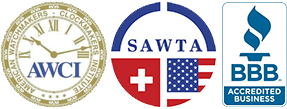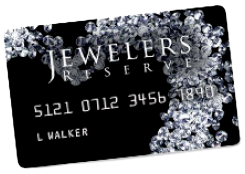Photo By sondem at Shutterstock
In an age of fitness trackers and cell phones with clocks, a classic watch seems almost anachronistic. However, watches throughout the ages have always been something of a status symbol, both because of the intricacy in assembling them and the fact that a well-made, well-taken care of watch can be a family heirloom for generations.
It’s important that you have your watch fixed promptly, if you drop it or if it stops working. A professional watch repair company like Matheu’s Fine Watches in Denver, CO, can ensure that your favorite watch has you always on time or that your own family heirloom can be passed to the next generation.
Have you wondered about the history of watch creation and repair? At Matheu’s we’re enthusiastic about our craft, and we’d like to share a little bit more with you about watchmaking.
The Invention of Watches
Watches were invented in the 15th century, adapting the stationary clock. Smaller timepieces were made possible by the invention of the mainspring. The original clock watches, designed to be worn as a pendant around the neck or attached to clothing, were spherical and rather heavy. Instead of a glass face like we’re accustomed to, the clock watch had a metal grill face, crafted so that the time could be read without opening the face. These were mostly novelty pieces for the elite and nobility, as the accuracy of these was quite poor.
A Gentleman’s Pocketwatch
The next evolution of the watch was the pocket watch, designed to fit in a coat pocket. The design of watches at this time made them especially prone to damage, especially from rough weather, so placing the watch in a waistcoat pocket protected the watch and reduced the need for expensive watch repair.
Glass began to cover the round face in 1610, and the configuration of the watch itself moved from spherical to flat. By 1657, with the invention of the fusee, watches became much more accurate. This conical pulley, created with a curved shape, wrapped around the mainspring barrel and charged the leverage as the spring unwound to equalize the driving force. By this time, the most common repairs were either the face or the fusee.
The Importance of the Balance Spring
Many advances in watchmaking arose as a result of watch repair, and the balance spring was one of them. In efforts to reduce the need for repair from a fusee out of alignment, the addition of the balance spring increased the accuracy of watches. However, this invention led to still more advancements in technique. Finishing the product and assembling it, however, was still done by hand until well into the 19th century.
Mass Producing the Watch
The industrial revolution and the building of railroads were, surprisingly, one of the driving forces behind mass-producing the accurate watch. The demand for precise timekeeping of the railways meant that inaccurate watches, or watches that needed frequent repair, simply wouldn’t do. In 1891, the precision railroad chronometer was invented, using temperature compensating balance wheels and delicate adjustments to the balance spring.
This technique, along with advancements in industrialization, allowed for accurate watches to be produced for the masses for the first time.
Moving from Pocket to Wrist
By the dawn of the 20th century, men still generally wore pocket watches, while women would wear a watch on the wrist or pinned to the bodice of her dress. However, during the Boer War and World War 1, men across the globe began to realize the practicality of a watch at the wrist, versus having extracted a watch from a pocket. This made military coordination much simpler, and the design stuck. Now, although we still see them for Denver, CO, watch repair, pocketwatches are quite rare.
Quartz Technology
In the 1960s, another important advancement arose in watchmaking technology. This was the invention of quartz technology, which led to the most accurate wristwatches to date. These watches had much less need for repairs, as they were created to be sturdy and the technology didn’t depend as much on smaller fees and springs that could cause the watch to become inaccurate. The quartz crystal resonator replaced the balance wheel entirely, and completely changed the nature of watch repair, which mostly required changing the quartz battery.
Summing Up the History of Watchmaking
Watches have had a history over centuries, and changes in design have generally been in response to changes in culture, from the old clock watch, which was more of a novelty than a timepiece, to the pocket watch, and finally, a much more accurate chronometer. Then, the design advanced in response to military needs, and is currently influenced by satellites and computers.
Watch Repairs Today
Watch repair services in Denver, CO, today, as in much of the word, have changed dramatically, as well. Instead of a watchmaker needing to work with tiny, delicate wheels and springs, today’s watch service more closely resembles a computer tech than the traditional watch repairman.
Today, if you damage your watch, your service will largely depend on what type of watch you’re using. Smartwatches, like the Apple Watch or a FitBit, may require a more technological repair service, adjusting the software that powers the device. Or, a cracked screen may be replaced with a new one, without damaging the watch below.
Other watch repair services, such as what you’d require to fix a Rolex or Breitling, still require precision services and techniques. Using specialty magnifying glasses and delicate pliers and screwdrivers, watch services for these watches are still somewhat like the old watchmakers. However, the wheels still require lubrication and service, which Matheu’s Fine Watches delivers. State of the art equipment and continuing education in repairing watches, soften from the watchmaking companies themselves, ensure that each repair is done in accordance with the original manufacturing process.
If you’re running behind, it may be time for a watch tune-up. Give us a call or visit us online to book your repair service today!





